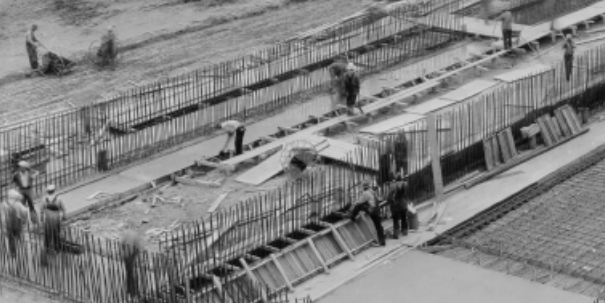“Flow of history: Can wastewater be treated?” is the third article in a series outlining the history of wastewater treatment in Madison from the mid-1800s through 1914. The first article Flow of history: Early concerns prompted community action and the second article Flow of history: From outhouses to sewers are available on our blog.
By Paul Nehm

Although City of Madison residents had sewers to carry waste away from their homes by the early 1890s, all this material was directed into lakes Mendota and Monona. Concerns for odors and health were causing city leaders to look for solutions, but the science of wastewater treatment was still in its infancy. City leaders questioned the plausibility of treated wastewater.
During the summer of 1894, the Madison Common Council hired George E. Waring as a consultant on this issue. Mr. Waring is described as having been the most well-known sanitary consulting engineer in the country at that time. He had done pioneering sanitary engineering work in New York City and had developed the sewerage system for Memphis, Tennessee. In addition, he was the author of the book “Modern Methods of Sewage Disposal.”
Mr. Waring’s recommendation was to abandon the system of discharging wastewater into the lakes and instead install a land disposal system. He suggested a 100-acre site just east of the Yahara River. Mr. Waring strongly spoke against using a chemical precipitation system, which had been proposed by others, because the nutrients in the effluent would still promote weed and algae growth in the lakes. The cost of his plan was $75,000. However, there was not sufficient Council support for his recommendations because of skepticism about a land disposal system and concern for the cost of such a system.
In the summer of 1895, two property owners along the shore of Lake Monona moved the discussion along by filing a lawsuit with the city because of the odors from the lake and the unsightliness of the materials being discharged from the sewers. Expecting additional lawsuits, the Council quickly appointed a committee of aldermen, doctors and engineers to recommend a plan to address the wastewater issue. The committee included McCellan Dodge, the city engineer at the time, and John Nader, the former city engineer. This committee recommended using a chemical precipitation plant with filtration estimated to cost $57,000. In a move to learn from other communities, the Council sent the mayor, city engineer, city attorney and chairman of the Sewage Committee to inspect nine treatment plants in Ohio, Pennsylvania, New Jersey and Massachusetts. After this tour, the group felt that the selection of the chemical precipitation/filtration plant had been the correct decision.
City attorney John Aylward described the proposed plant as having “large rectangular tanks where sedimentation could take place after the sewage had been chemically treated. The effluent would then be filtered through five feet of specially prepared beds of sand, of which there were to be four acres to begin with.”
Although it seemed like the city leaders had now decided how they would address the wastewater issues, more discussions and delays were on the horizon.
Much of the information for the article series was found in “Madison – A History of the Formative Years” by David V. Mollenhoff and in articles written by early leaders from Madison’s public works sector. The article was originally published in the Summer 2020 edition of the District’s newsletter, The Clarifier.






